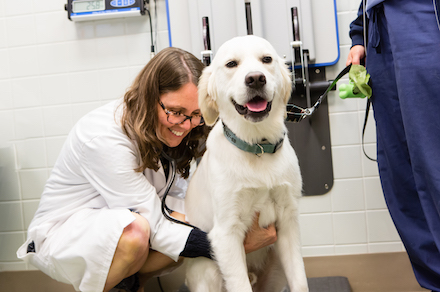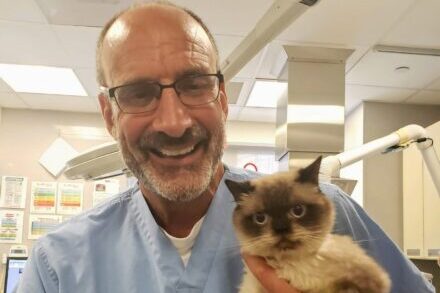Pancreatitis: Systemic Effects of an Unhappy Organ

Pancreatitis: Systemic Effects of an Unhappy Organ
One of my friends was in the hospital last week. Not a human friend, but a dog friend. Happily, I have dog friends who are not dog patients and Decoy is one of those. This lovable lab is a member of a family who are friends of my family.
Under the weather
I saw Decoy’s name on the overnight admission list which is emailed to all the veterinarians at The Animal Medical Center at about 5:30 every morning. Decoy came to The AMC ER for vomiting and limping. The ER doctors found abdominal pain, a fever and an elevated heart rate. On my way into the hospital, I stopped by his cage to say hello, but could tell my normally tail-waggin’ friend was a hurtin’ pup; Decoy was living up to his name by looking more like an inert, stuffed dog than a real one.
In the blood tests
Blood tests for AMC patients are available online. To help with interpretation, abnormal results are displayed in red, normal results in black. Decoy’s reports were shockingly red. His illness was impacting his liver, his blood calcium level, and dramatically increasing his infection-fighting white blood cells.
Inside the abdomen
Because Decoy’s blood tests indicated multiple organs within the abdomen were affected by whatever was making him sick, his internal medicine specialists ordered an ultrasound of his abdomen. Ultrasounds let veterinarians look at intra-abdominal structures in a different fashion than x-rays allow. X-rays show bones and lungs very clearly, but we can only see the outline of abdominal organs like the liver and kidneys. The pancreas cannot be seen using x-rays and we rely on ultrasound to help make a diagnosis of pancreatic disease. Because pancreatic disease could account for Decoy’s clinical findings of vomiting and diarrhea and his multiple blood test abnormalities, an ultrasound was done and confirmed the suspicion of pancreatic inflammation or pancreatitis. The ultrasound showed pancreatic swelling. The swollen pancreas displaced the colon out of its normal position and was even causing a small amount of fluid to accumulate in the abdomen.
On the road to recovery
There is no antidote to stop pancreatic inflammation. Veterinarians provide what we call supportive therapies while the inflammation subsides and then we try to decrease risk factors for recurrence. Decoy received intravenous fluids, antiemetic agents, and antibiotics in case the pancreatitis was turning into an abscess. Every day he improved a little bit and he was discharged from the hospital a few days later.
Follow up
To help prevent another bout of pancreatitis, Decoy’s doctors made several recommendations to his family. First, overweight dogs are at greater risk of developing pancreatitis. I suspect a diet will be on Decoy’s list of New Year’s resolutions. High-fat diets increase the risk of pancreatitis. This means he may need to eat a special low-fat diet and certain dog delicacies like bacon will no longer be a menu option for him. In the future, his doctors will avoid certain medications to prevent provoking another serious case of pancreatitis.
Pancreatitis is a common disorder of dogs and it can become a recurrent problem. In Decoy’s case, the problem was quickly corrected, but when pancreatitis becomes a chronic problem, seeking input from an internal medicine specialist is a good idea.
































